
Having been established in 1901, the Nobel Prize is the most prestigious award in the scientific field. The award ceremony for the Nobel Prize 2022 was held on December 10. Among the Nobel Prize-winning studies are the ones that have made significant contributions to the development of display technology. For example, Einstein, one of the most significant contributors to the advances in physics, was awarded the Nobel Prize in Physics in 1921 for his explanation of the mechanism of light through the “photoelectric effect” theory (a phenomenon electrons are emitted by a metal surface when it is irradiated by light above a certain frequency). His research laid the theoretical foundation for the display industry, as the development of display technology continued based on the photoelectric effect. Find out more about the research and the Nobel Prize winners (in physics and chemistry) that have set landmark milestones in the history of displays.
Invention of the First Cathode-Ray Tube
Karl Ferdinand Braun (Winner of the Nobel Prize in Physics in 1909)
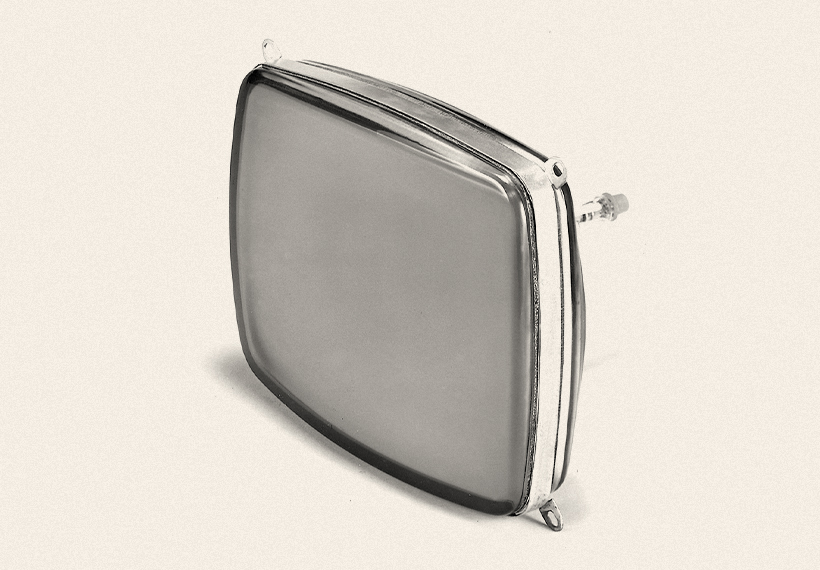

Up until the late 1990s, TVs used to have the thick, bulging Braun tube. Where does this name come ? This protruding receiver is formally called the Cathode-Ray Tube (CRT), but named the “Braun” tube after its inventor, Karl Ferdinand Braun. A German physicist, Braun discovered that when negatively-charged electrons strike a fluorescent material on a glass surface, light is emitted. In the CRT, countless electrons hit the fluorescent surface, resulting in 25 to 50 electrons per second, causing light to be emitted. This is the light that we see on a TV screen.
Before the commercialization of the Liquid Crystal Display (LCD) and the Plasma Display Panel (PDP), the CRT played a pivotal role in displays for over 100 years. Braun was awarded a Nobel Prize in Physics in 1909, along with Marconi, for his development of the wireless telegraph after continual research. In 1987, the Karl Ferdinand Braun Prize was established in commemoration of his achievement that changed the display industry, and the prize is annually awarded to the most outstanding achievement in display technology of the year.
The Beginning of Quantum Dot Display — Quantum Electrodynamics
Richard Phillips Feynman (Winner of the Nobel Prize in Physics in 1965)

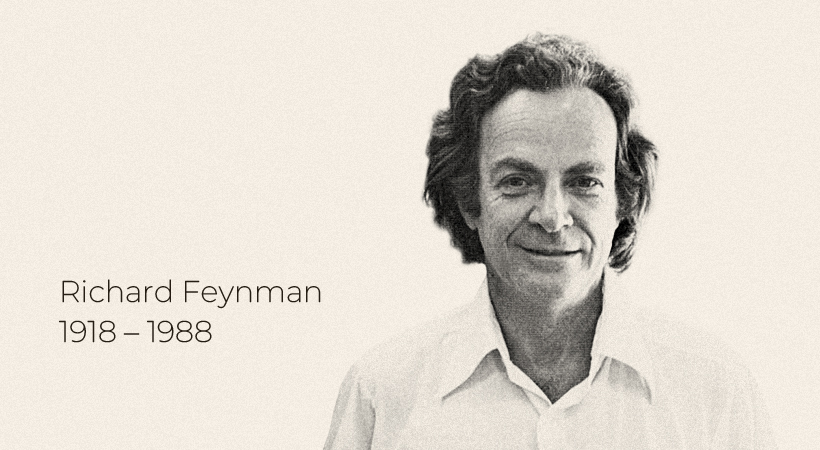
While Einstein has made a tremendous contribution to the development of display technology with his theory on the photoelectric effect, he was ultimately opposed to quantum mechanics. Quantum mechanics has spawned heated arguments between its proponents and critics in the field of physics. It was the introduction of Quantum Electrodynamics (QED) that paved the way for quantum mechanics to be more widely accepted. The scientist who introduced QED is the American physicist Richard Feynman. In 1965, Feynman won the joint Nobel Prize in Physics for this theory.
“There’s plenty of room at the bottom,” said Feynman in one of his lectures, shining light on the nano-scale world that the existing physics’ theories failed to identify. His theory was verified much later in 1982. Thanks to the invention of the Scanning Tunneling Microscope (STM) which enabled observation of images at the atomic level, and the discovery of quantum dots, nano-scale particles could be finally observed. The quantum dot, discovered in 1982, is less than 10 nm (nanometer; 1 nm is 1/1,000,000,000m) in diameter and can emit light without any light source as long as electricity is provided. Quantum dots also possess quantum physical characteristics that allow them to emit blue light when their size is small but emit red light when their size is bigger. Leveraging these characteristics led to the creation of quantum dot-based displays such as QD-OLED.
The Beginning of Liquid Crystal Displays
Pierre-Gilles de Gennes (Winner of the Nobel Prize in Physics in 1991)

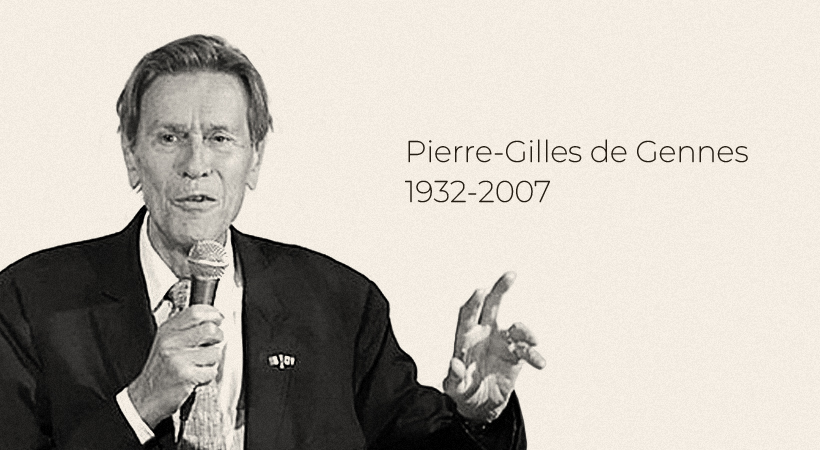
Just as advances in industrial technologies are impossible without scientific discoveries, scientific discoveries sometimes fail to draw the attention they deserve without the development of industrial technologies. A good example of this is the Liquid Crystal Display (LCD). In 1991, French physicist Pierre-Gilles de Gennes won the Nobel Prize in Physics for his explanation of the characteristics of liquid crystals and high molecular compounds by using mathematical models. It was in the 1960s that he began his research on liquid crystals.
In its early days, research on liquids crystal had few areas of application, apart its academic significance. But that quickly changed as the optical characteristics of liquid crystals were discovered. In 1968, liquid crystals were observed to turn opaque in an electrical field, and in the 1970s, liquid crystal technology began to be used in electronic watches and calculators. As liquid crystals rapidly grew to be the key display material for TVs and monitors, the industry around LCDs underwent exponential growth. At the beginning of the 20th century, when the LCD industry was booming, studies that laid the foundation for such a major industrial development naturally drew the attention of the world, leading to de Gennes’ winning the Nobel Prize in Physics in 1991.
A Physicist and Chemist Duo Who Brought About the Development of OLED —
Alan Jay Heeger and Alan Graham MacDiarmid (Winners of the Nobel Prize in Chemistry in 2000)

American physicist Martin Pope is often credited to have built the foundation for the introduction of Organic Light-Emitting Diodes (OLED), used in mobile phones and TVs to create high image quality, trailblazing the field of OLEDs with his research paper titled “Electroluminescence in Organic Crystals” published in 1963. Continuing Dr. Pope’s research was Alan Jay Heeger and Alan G. MacDiarmid, who won the Nobel Prize in Chemistry in 2000 for their discovery of the “conductive high-molecular material.” What is interesting about this pair is that Dr. Heeger was a physicist, while Dr. MacDiarmid was a chemist.
In 1975, the two scientists crossed over their respective areas of expertise and jointly created a conductive high-molecular material that could enable electrical conductivity in plastics. OLEDs, developed based on this research, emit light on their own without the need for a backlight, unlike an LCD. OLEDs took display technology to new heights with their outstanding contrast ratio, color expression, and the ability to create flexible displays. In the 1980s, when the research around OLEDs was still in its early stage, studies were carried out to find out the more effective option between the high- and low-molecular materials when it comes to commercialization as a light-emitting material. To everyone’s surprise, the low-molecular material was commercialized first. Research on more efficient low-molecular material and the use of high-molecular material for the inkjet method continues to this day.
Development of Blue Light-Emitting Diode, the “Last Piece of the Puzzle” in LED Lights: Shuji Nakamura, Isamu Akasaki, and Hiroshi Amano (Winners of the Nobel Prize in Physics in 2014)
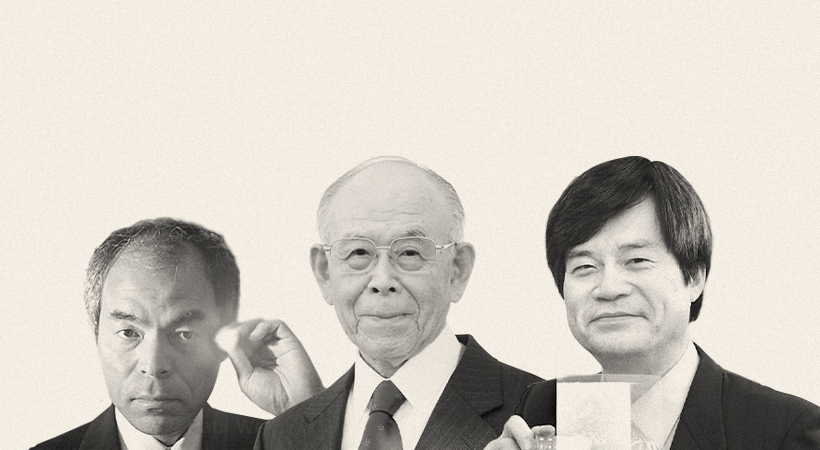
Did you know? The energy efficiency of the incandescent lights that we frequently use is only 5% and that of fluorescent lights is a mere 15%. On the contrary, the energy efficiency of an LED lamp is a whopping 40%. In fact, this is precisely the reason why Japanese scientists Shuji Nakamura, Isamu Akasaki, and Hiroshi Amano won the Nobel Prize in Physics in 2014 — they were given the honor in recognition of their achievement in developing blue LEDs.
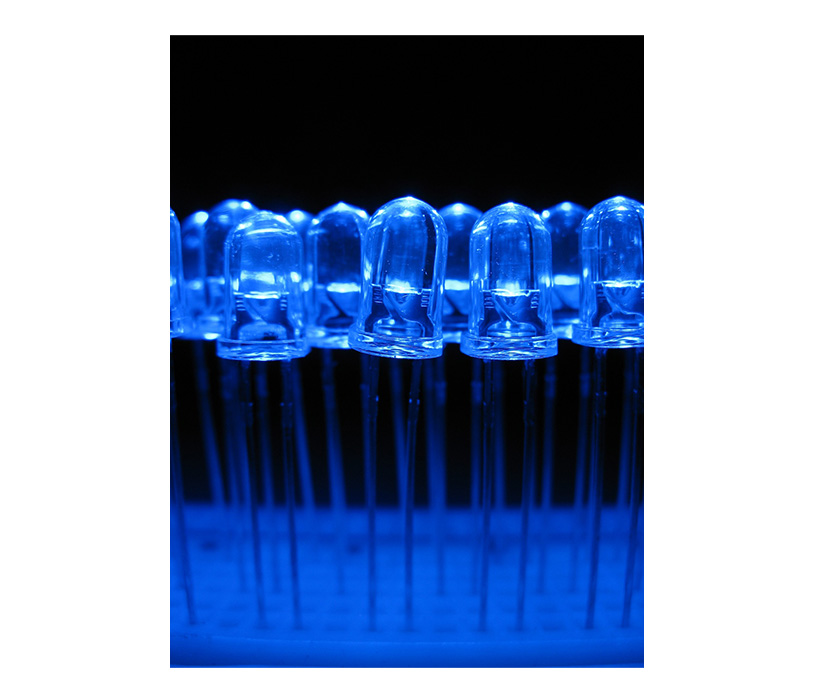
In order for light to be white, all three primary colors of red, green, and blue have to be combined. Similarly, an LED light needs to have three primary colors in order to produce the white light that we often see in a fluorescent lamp. While green and red LEDs were developed decades ago, no one was able to successfully create blue LEDs until recently. In 1992, blue LEDs were finally developed so that LEDs could replace the incandescent and fluorescent lights as a source to produce white light. A white LED lamp can last for an average of 100,000 hours thanks to its excellent energy efficiency, which is 10 times that of a fluorescent lamp and 100 times that of an incandescent lamp. Across the world, a tremendous amount of energy has been saved thanks to the introduction of blue LEDs.
Today’s article has reviewed the history of display technology based on the landmark bodies of research that received the Nobel Prize. From the Cathode-Ray Tube to LCD, OLED, and QD-OLED, the display technologies used today are built upon several decades of research. Research efforts in various scientific fields, ranging quantum physics to theoretical physics and chemistry, are expected to drive further growth and development of display technology and the industry.
※This article does not reflect the stance nor strategies of Newsroom.

